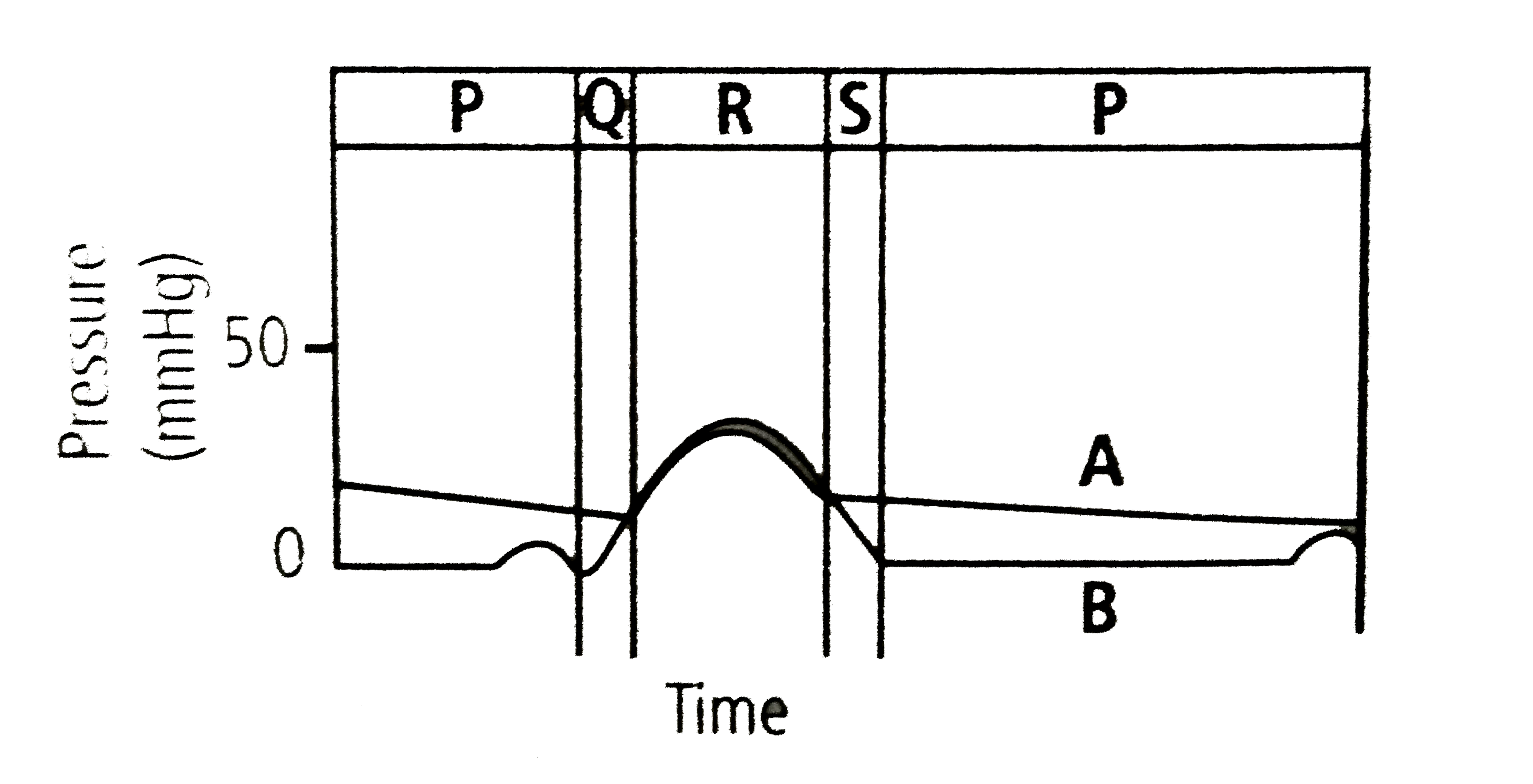When the ventricular pressure is low these valves get closed ?
Tricuspid valve
Bicuspid valve
Semilunar valves
Mitral valve
The correct Answer is:C
To answer the question "When the ventricular pressure is low, which valves get closed?" we need to understand the functioning of the heart and the cardiac cycle.
1. Understanding the Cardiac Cycle: The cardiac cycle consists of different phases: atrial systole, ventricular systole, and diastole. During these phases, the heart chambers contract and relax, leading to changes in pressure.
2. Identifying Low Pressure Phases: The ventricular pressure is lowest during the diastole phase when the ventricles are relaxed. This occurs during both the ventricular diastole and joint diastole (when both atria and ventricles are relaxed).
3. Risk of Backflow: When the ventricles are relaxed and the pressure is low, there is a risk of blood backflow from the major arteries (aorta and pulmonary artery) into the ventricles. This backflow can occur because the pressure in these arteries is higher than in the relaxed ventricles.
4. Function of Semilunar Valves: To prevent this backflow of blood, the semilunar valves (located at the junction of the ventricles and the major arteries) close when the ventricular pressure is low. The semilunar valves include the aortic valve (between the left ventricle and aorta) and the pulmonary valve (between the right ventricle and pulmonary artery).
5. Conclusion: Therefore, when the ventricular pressure is low, the semilunar valves close to prevent the backflow of blood from the aorta and pulmonary artery into the ventricles.
Final Answer:
The valves that get closed when the ventricular pressure is low are the semilunar valves (Option 3).
The valves that get closed when the ventricular pressure is low are the semilunar valves (Option 3).
Topper's Solved these Questions
- BODY FLUIDS AND CIRCULATIONBOOK - AAKASH SERIESCHAPTER - BODY FLUIDS AND CIRCULATIONEXERCISE - Exercise -I (Electrocardiagraphy )
7 Videos
- BODY FLUIDS AND CIRCULATIONBOOK - AAKASH SERIESCHAPTER - BODY FLUIDS AND CIRCULATIONEXERCISE - Exercise -I (Double Circulation & Regulation of Cardiac Activity )
8 Videos
- BODY FLUIDS AND CIRCULATIONBOOK - AAKASH SERIESCHAPTER - BODY FLUIDS AND CIRCULATIONEXERCISE - Exercise -I (Human Circulatory System )
22 Videos
- BIOTECHNOLOGY AND ITS APPLICATIONSBOOK - AAKASH SERIESCHAPTER - BIOTECHNOLOGY AND ITS APPLICATIONSEXERCISE - Exercise - III (Previous AIPMT/NEET Questions )
19 Videos
- BREATHING AND EXCHANGE OF GASES BOOK - AAKASH SERIESCHAPTER - BREATHING AND EXCHANGE OF GASES EXERCISE - EXERCISE-III (Previous AIPMT/NEET Questions)
21 Videos
Similar Questions
Knowledge Check
Vascular bundle is closed when
Acambium presentBcambium absentCpericycle absentDnone of theseRefer to the given figure in which A refers to pulmonary artery pressure and B refers to right ventricular pressure. Identify P,Q,R and S in the figure and match with the list (i-iv) given below
(i) Isovolumetric ventricular contraction
(ii) Ventricular ejection
(iii) Isovolumetric ventricular relaxation
(iv) Ventricular filling
 AP-(iv),Q-(iii),R-(ii),S-(i)BP-(ii),Q-(iii),R-(i),S-(iv)CP-(iv),Q-(i),R-(ii),S-(iii)DP-(i),Q-(ii),R-(iii),S-(iv)
AP-(iv),Q-(iii),R-(ii),S-(i)BP-(ii),Q-(iii),R-(i),S-(iv)CP-(iv),Q-(i),R-(ii),S-(iii)DP-(i),Q-(ii),R-(iii),S-(iv)
How much time does ventricular systole last? Which valves close during this phase?
View SolutionAssertion : First heart sound (LUBB) is produced at the beginning of ventricular systole stage.
Reason : During ventricular systole semilunar valves are closed.
View SolutionRise in ventricular pressure during ventricular systole leads to closure of atrioventricular valves which generates
1) Lub sound
2) Dub sound
3) Third heart sound
4) Heart murmurs
View SolutionA : Isovolumetric systole of a normal cardiac cycle is responsible for the opening of semilunar valves causing the blood flow into aortic aorta and pulmonary aorta.
R : During isovolumetric systole, intraventricular pressure increases as semilunar and AV valves are closed and ventricles are contracting .
View SolutionSemilunar valves close when
View SolutionWhen the concentration of the soil solutes is low, the absorption of water
View Solution
